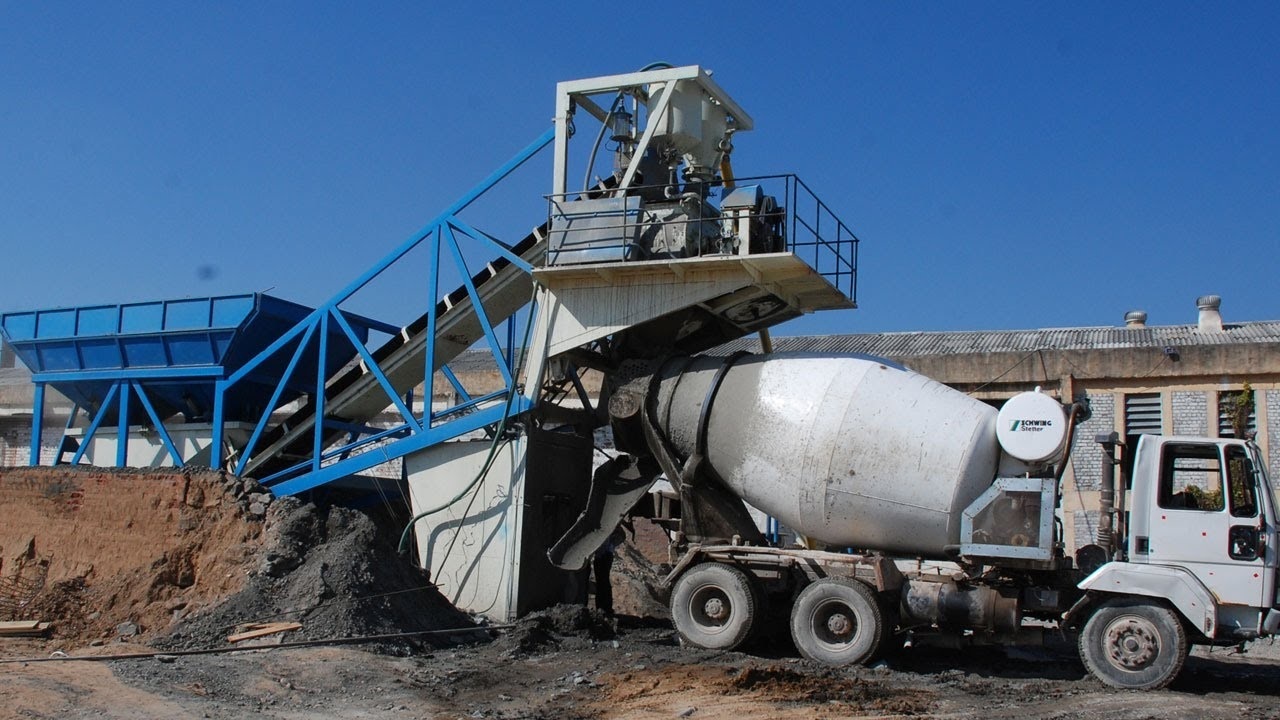As the construction industry grapples with the imperative of sustainability, the environmental impact of every aspect of the construction process comes under scrutiny. Concrete, a fundamental building material, plays a central role in construction projects, and the equipment used for batching concrete is a critical factor in determining its environmental footprint. In this article, we will delve into the environmental impact of concrete batching equipment, shedding light on both the challenges and innovative solutions that are shaping the industry’s approach to greener construction practices.
1. Resource Consumption: Balancing Efficiency and Conservation
Concrete batching equipment is voracious in its consumption of resources, primarily cement, water, and aggregates. The production of cement, a key ingredient in concrete, is energy-intensive and contributes significantly to carbon emissions. Modern equipment, however, offers features such as automated batching and precise control, optimizing resource utilization and minimizing wastage. The challenge lies in striking a balance between efficiency and conservation.
2. Carbon Emissions: The Carbon Footprint of Concrete Production
The cement industry is a major contributor to carbon dioxide emissions globally. The process of clinker production, a crucial step in cement manufacturing, releases substantial amounts of CO2. Concrete batching equipment, through its energy consumption and material processing, indirectly contributes to the carbon footprint of concrete. Manufacturers are increasingly investing in innovations like alternative binders, carbon capture technologies, and energy-efficient designs to mitigate this environmental impact.
3. Water Usage and Conservation: Managing a Precious Resource
Water is a vital component in the concrete mixing process, and its consumption raises concerns, especially in regions facing water scarcity. Concrete batching equipment must be designed to manage water usage efficiently. Features like moisture sensors and automated water dispensing systems help achieve the optimal water-cement ratio, reducing waste and ensuring the responsible use of this precious resource.
4. Transportation: Reducing the Carbon Miles of Concrete
The environmental impact of concrete batching equipment extends beyond the production phase to transportation. The distance between the batching plant and the construction site significantly influences the carbon footprint of concrete delivery. Opting for on-site batching or strategically locating batching plants can minimize transportation-related emissions, contributing to more sustainable construction practices.
5. Waste Management: Tackling Concrete Waste Head-On
Concrete batching generates waste in the form of excess or rejected concrete, which can contribute to landfill congestion. Modern equipment incorporates features like reclaimers and recycling systems that allow for the reuse of excess concrete, reducing waste. Additionally, the use of recycled aggregates in concrete production further enhances sustainability by decreasing the demand for new raw materials.
6. Noise and Air Pollution: Mitigating On-Site Impact
On-site operations of concrete batching equipment can generate noise and air pollution, impacting both the environment and the surrounding communities. Manufacturers are focusing on noise reduction technologies, and equipment design improvements to minimize the on-site impact. Additionally, the adoption of electric-powered equipment reduces emissions and noise compared to traditional diesel-powered alternatives.
7. Alternative Materials and Mix Designs: Paving the Way for Sustainability
The environmental impact of concrete batching equipment can be mitigated through the adoption of alternative materials and mix designs. This includes incorporating supplementary cementitious materials (SCMs) like fly ash or slag, which reduce the need for clinker in cement production. High-performance concrete mix designs can also enhance the durability of structures, extending their lifespan and reducing the need for frequent replacements.
8. Lifecycle Assessments: A Holistic Approach to Sustainability
Evaluating the environmental impact of concrete batching equipment requires a comprehensive understanding of its entire lifecycle. Lifecycle assessments (LCAs) consider the environmental effects from raw material extraction to manufacturing, construction, and eventual disposal or recycling. This holistic approach allows for informed decision-making, guiding the industry towards more sustainable practices.
9. Government Regulations and Industry Standards: Catalysts for Change
Governments and industry organizations play a pivotal role in shaping the environmental impact of concrete batching equipment through regulations and standards. Stricter emission limits, water usage guidelines, and requirements for incorporating recycled materials are some of the measures driving the industry towards greener practices. Adhering to these regulations ensures a collective commitment to environmental responsibility.
Conclusion:
While the environmental impact of concrete batching equipment poses challenges, the industry is responding with innovation and a commitment to sustainable practices. From resource-efficient designs to alternative materials and the embrace of stringent regulations, the trajectory is clear—towards a more environmentally conscious construction industry. As construction professionals navigate the concrete jungle, the choices made in selecting and operating concrete batching equipment will play a crucial role in building a future where construction and environmental sustainability coexist harmoniously.


